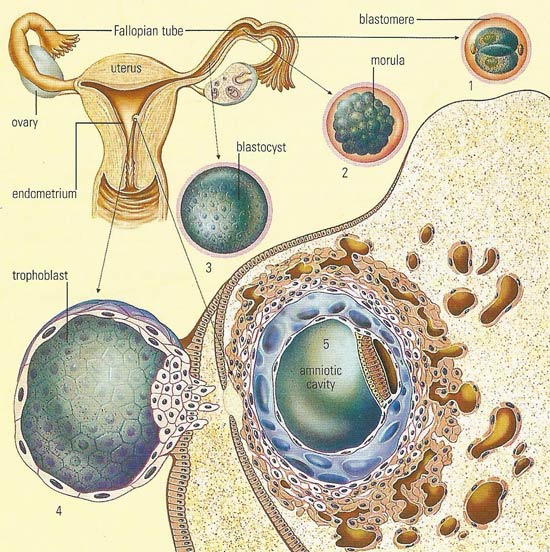ovum

A ovum is a female gamete (reproductive cell) produced in the ovary (in animals) or ovule (in plants). After fertilization by the male gamete (sperm in animals, pollen in plants), the ovum or egg cell becomes a zygote that is capable of developing into a new individual.
In humans, it takes about a week for the fertilized ovum to pass down the Fallopian tube and implant itself in the uterine lining, the endometrium. Within hours of conception, mitosis begins with the development of a sphere of an increasing number of cells; the sphere starts as the blastomere (1), develops into the morula (2) of about 64 cells. At this stage, it changes into a hollow, fluid-containing ball – blastocyst (3) – with the inner cell mass at one end. It can now begin implantation (4). By the ninth day after conception, the blastocyst has sunk deep into the endometrium (5) and is already receiving nutrition from the mother.


